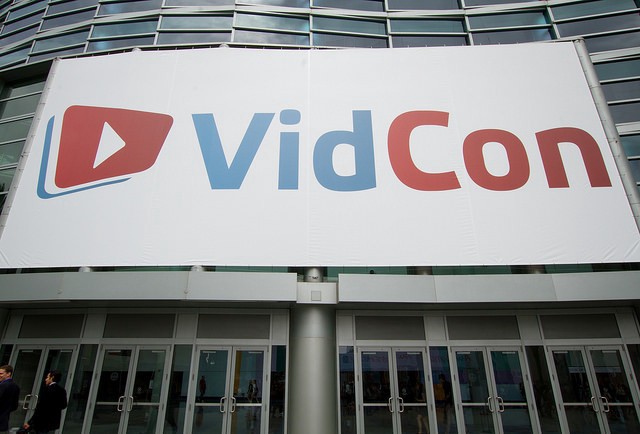When Working For Yourself Is About Getting a Company to Hire You

Having once dipped my toes into the business of making money on YouTube (spoiler alert: did find small audience, did get invaluable experience in how-to-freelance, did not become YouTube star), I am always very interested in stories of how other people are making it — or not making it — with online video.
And then there are, as Verge reports, the people who are kind of in between.
On a recent midsummer afternoon, Connor Manning was sitting in a Valley Village bistro, picking at his salad and considering [YouTube superstar, author, and television host Grace Helbig’s] level of celebrity, celebrity generally, and if that was what he really wanted. Manning is not famous. Except, perhaps, to the 64,000 people who were subscribed to his YouTube channel. That doesn’t sound like a lot, compared to the stars on the billboards, but it’s all relative. Sixty-four thousand people, he said — “that’s an NFL stadium.”
64,000 subscribers is a lot. Even with the understanding that many YouTube subscribers are not active viewers, that’s still several times the “1,000 true fans” that Kevin Kelly said a person needed to have a sustainable creative career.
But YouTube has changed. It’s not necessarily about the individual fans anymore.
Just a few minutes earlier he had mentioned how hard he works to appear unguarded for his audience, his fans. If he wanted to develop his YouTube videos into a self-sustaining career, the kind where he wouldn’t have to wait tables on the side, he would need to present a more confident facade to the companies that control the pathways to larger audiences, more money, greater success.
Verge calls these companies “the gatekeepers to becoming this new kind of celebrity,” and it makes sense. I wrote about these types of companies for Splitsider last year; networks like CollegeHumor or Funny or Die, which are in turn part of IAC and HBO, respectively.
Manning probably isn’t aiming his unguarded, personal videos towards CollegeHumor, but he is looking for partnerships with companies that can help him earn money. (Like everything else on the internet, the money comes from a variety of sources, including sponsorships and ads.) Manning was, at one point, part of a multi-channel network called Big Frame — which has since been acquired by AwesomenessTV, whose parent company is DreamWorks.
I went to my first VidCon in 2011, and that was right when people were starting to talk about getting picked up by a multi-channel network as the new way to build a YouTube career. At that time, I was horrified. What was the point of being a creative person if you just had to go work for some network that probably had all kinds of rules and requirements and would totally compromise your vision???
I have since changed my mind. Now, I think that becoming part of a larger entity is one of the smartest things you can do for yourself, if you are interested in having a creative career. The idea of the fully independent creator making money entirely from fan donations (and ticket purchases and merch sales and ad revenue), is still out there, and I know a lot of people who are doing it that way, but I will tell you that my career did not really get started until I began writing for other companies and publications.
I recently did an informational interview with a person new to the freelancing world, and that was exactly the advice I gave. Write your own stuff, make the things that only you can make, and also send targeted pitches to publications. Try to get a regular contributor gig somewhere, so you can get that regular paycheck. Then put a link to your personal website in your bio. It’s much easier to do it that way than to try to drive an audience directly to your own personal work, and you’ll make more money.
(Plus, having editors has made my work so much better.)
The standard Future of Music Coalition disclaimer applies: “Qualitative and quantitative data around economics for artists thus resists simplified narratives.”
Here’s where Verge ends Manning’s story:
A few weeks after Vidcon, he did a branded video, his first in years, for a company called Famebit. It felt different than similar projects he’d done with Big Frame — he was in control, and didn’t feel like he was diminishing who he was, his own brand. With the money from that, and Patreon, he’d be able to pay rent off internet work alone.
That sounds about right, from my experience as a freelancer and a creative person. You’re working on your own projects, you’re working on projects for other companies, and you’re making money. It is very interesting that the independent creator path often leads right back into the “working for a company” path, but that’s often where the money is, and where there are people who can help you build your own audience — as you help them build theirs.
Photo credit: Michael Dunn
Support The Billfold
The Billfold continues to exist thanks to support from our readers. Help us continue to do our work by making a monthly pledge on Patreon or a one-time-only contribution through PayPal.
Comments